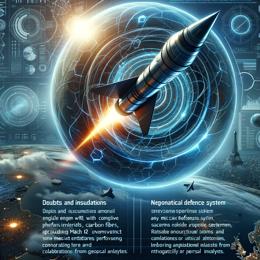Image created by AI
The ATACMS Factor: Evaluating the Impact of Long-Range Missiles in the Ukraine-Russia Conflict
A deep dive into the strategic and tactical implications of Ukraine's use of ATACMS and Storm Shadow/SCALP-EG missiles reveals a nuanced picture of the battlefield and geopolitical shifts. Since the United States authorized these strikes within internationally recognized Russian territory in mid-November 2024, the impact has stirred both military adaptations and international discourse.
The strikes, particularly on military facilities in Taganrog on December 11, which resulted in casualties and damage, signify a critical shift in Ukraine’s military strategy. However, the essential takeaway is the limitations these weapons face against Russian defenses and the minimal strategic changes they have provoked.
Russia's response, notably the absence of severe military retaliation and the deployment of the Oreshnik missile in reaction, suggests a calibrated approach rather than an escalatory one. The Oreshnik, described dramatically by Putin, seems to serve more as a political statement than a military game-changer due to its limited effectiveness reported in strikes.
Logistically, the ATACMS and Storm Shadow/SCALP-EG missiles, with ranges up to 300 km, have targeted significant but fewer viable military assets due to prior Russian adaptations and relocations post-Ukraine’s 2023 counteroffensive. The geographical constraints and the limited number of missiles available to Ukrainian forces pose ongoing challenges, making consistent supplies crucial for sustained operational success.
Despite these hurdles, the strategic use of these missiles does more than just physical damage; it potentially shapes Russia’s military movements and logistical calculations, complicating their operational planning and response times. This aspect underscores a subtle but critical element of long-range warfare — its psychological and strategic stress on enemy forces, even if immediate tactical gains seem marginal.
From a diplomatic angle, the approved use of such potent weapons could signal shifts in international relations and support dynamics, particularly aligning global perspectives on the conflict’s nature and the extents of military aid provided to Ukraine.
Conclusively, while the direct battlefield impact of the ATACMS and Storm Shadow/SCALP-EG strikes may not dramatically alter the war’s course, their existence and potential use introduce a strategic depth that influences both military tactics and geopolitical narratives around the ongoing Ukraine-Russia conflict.










